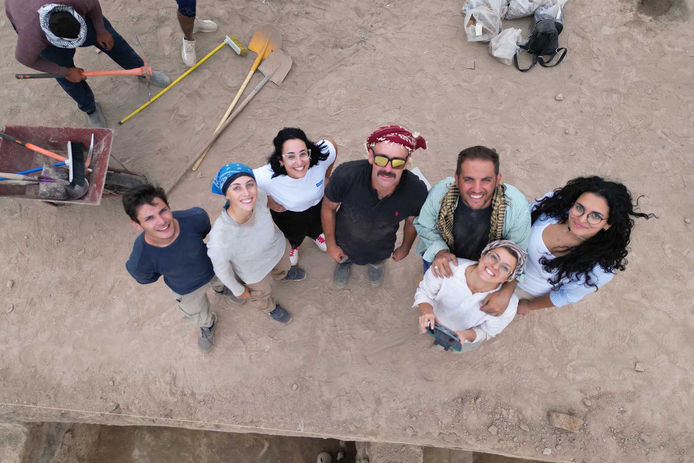From 7/10/2021 - permanent exhibition
Phil Stern Pavilion - Le Ciminiere, Catania
Da Babilonia a Baghdad
Sulle tracce di Hammurabi
Curated by Professor Nicola Laneri, this archaeological exhibition brings together Italian, European, and Iraqi institutions in a context of international cultural and scientific cooperation. The exhibition features works from the British Museum in London, the Royal Museums in Turin, the Pergamon Museum in Berlin, and the Louvre in Paris.

THE FINDS AND THE EXHIBITION
The exhibition—curated by archaeologist Nicola Laneri, professor of Near Eastern Archaeology and History of Art and director of the Tell Muhammad Archaeological Mission (Iraq), and Professor Germana Barone, delegate to the University Museum System and director of the Museum of Knowledge, and created in collaboration with architect Daniele Leonardi (Third Mission Area) and the OELLE Foundation—is centered around the recent finds and results of the archaeological excavations of the Baghdad Urban Archaeological Project (BUAP) at Tell Muhammad, a site located in the Iraqi capital Baghdad and dated to approximately 4,000 years ago, the time of the first dynasty of Babylon and the great ruler Hammurabi. The exhibition focuses precisely on the figure of the visionary Babylonian ruler, with artifacts from renowned museums such as the Vorderasiatisches Museum of the Pergamon in Berlin, the British Museum in London, and the Royal Museums of Turin, as well as a 3D reproduction of the famous Stele of Hammurabi, in collaboration with the Louvre in Paris.
The exhibition represented a unique opportunity to explore rare archaeological artifacts from the period of the First Dynasty of Babylon, including metal objects collected by F. Jones and A. H. Layard at Tell Muhammad in 1850, two of which bear the inscription "E.GAL Hammurabi - Palace/Fortress of Hammurabi." These objects, along with architectural reconstructions, a gallery of evocative excavation photographs, and a multipurpose room, offer the general public an extraordinary opportunity to experience the initial archaeological findings from the excavations conducted at Tell Muhammad in collaboration with the Iraqi Board of Antiquities and Heritage (SBAH) and with the support of the Ministry of Foreign Affairs and International Cooperation.
The exhibition also recounts the work of archaeologists, from the excavation to the archaeometric analyses and virtual reconstructions created in collaboration with various departments of the University of Catania: the thrill of touching the clay bricks that skilled hands shaped four thousand years ago, of reconstructing production technologies and exchange systems, of unearthing tablets that tell of the daily life of a city that prospered along the Tigris River, but also of surprising scientific knowledge, beliefs, and superstitions of its ancient inhabitants.
The exhibition led visitors, including the youngest, through dedicated activities in the heart of the fascinating Mesopotamian civilization, whose legacy is still vital in contemporary Iraq and can even be recognized in our society, as evidenced by the dress designed by Gabriella Ferrera and the sound installation by Michele Spadaro.
















